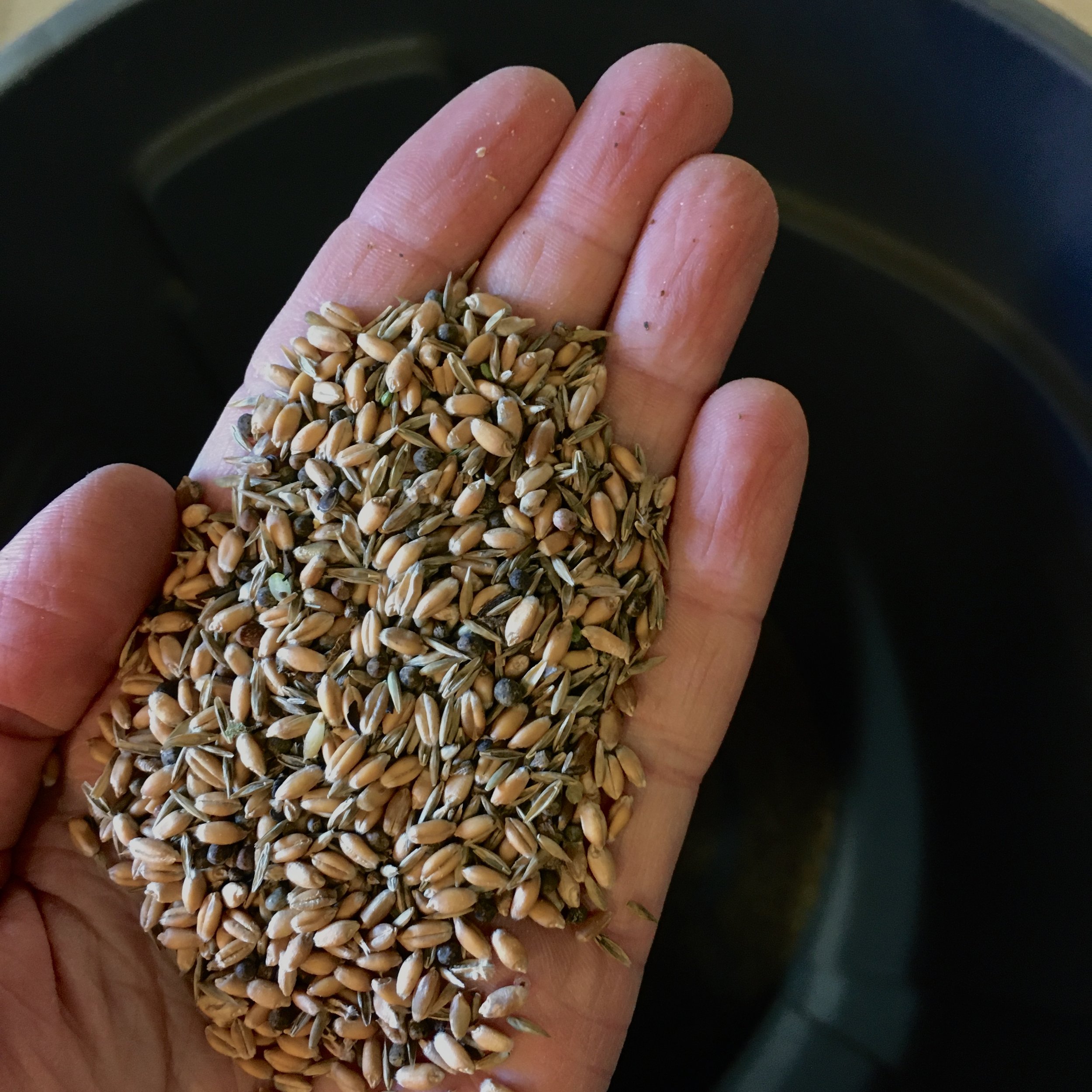Wild Garlic Stinks
A handful of 2022’s harvest of Turkey Red wheat (grown at Great Day Gardens) showing how similar wild garlic bulblets are to the wheat.
That wild garlic keeps coming up in my seed cleaning conversations recently means that it presents a unique cleaning problem. Most impurities in a batch of grain can be removed on the basis of their size, shape, or density. From what farmers have told me, wild garlic bulbs are about the same size, shape, and density of wheat. Does it matter? Most impurities can be present in small amounts and not impact grain quality. But the strong flavor of garlic comes through at even tiny amounts. Mennel Milling, a conventional mill in Roanoke, starts docking prices it pays for soft wheat if it detects more than 2 bulblets in a 100 g sample.
So, how to get it out? The industry standard is the optical color sorter. This is a ridiculously sophisticated machine (with a price tag to match) that sorts particles by color. This is the same way you would go about picking out the bulblets if you were to do it by hand, which, some CGA farmers do, bless their hardy souls. Your eye can see the garlic because it is a different color. As far as I know this is the only way to clean out garlic, but PLEASE speak up in the comments if you know of another way.
Pete Sisti of Greater Richmond Grains in Powhatan, VA shows off his optical color sorter at CGA’s 2022 Q3 Member Meeting.
Another way is to make sure it doesn’t get in there in the first place. Apart from spraying herbicide, which CGA members eschew, a tried-and-true method is “get out there and pull it”. Not a small feat if you have an acre of grain. Virtually impossible if you have much more than that. Luckily, we know of at least two optical sorters in the CGA network, owned by farmers who are happy to provide custom color sorting. We are busy putting together a list of cleaning resources that we will link here later. In the meantime, email hello@commongrainalliance.org for more information.
Now, to put on my advocacy hat, one miller I talked to blamed the optical sorter for the widely-held impression that a combine must magically harvest pristine grain. Partly to blame is the lack of knowledge of the cleaning and processing process because all people ever see is perfect grain. But the ability of commodity elevators and mills to deliver perfectly clean grain (because of their optical sorters) means that buyers don’t think about how hard it is to achieve pristine grain. Contrast this to dry beans. We have all read the ubiquitous recipe instruction to “wash and sort” your beans before soaking. Everyone knows there is the possibility of finding rocks, broken beans, dust, or diseased beans in a given bag at the grocery store. Grain should be no different. Backing away from the expectation of perfection would confer immense benefits to small and midsize grain farmers.
Note: Does anyone know what Allium species is the culprit here? Please leave a note in the comments below, or email hello@commongrainalliance.org. Thanks!
This material is based upon work that is supported by the National Institute of Food and Agriculture, U.S. Department of Agriculture, under award number 2019-38640-29878 through the Southern Sustainable Agriculture Research and Education program under subaward number LS20-327. USDA is an equal opportunity employer and service provider. Any opinions, findings, conclusions, or recommendations expressed in this publication are those of the author(s) and do not necessarily reflect the view of the U.S. Department of Agriculture.



